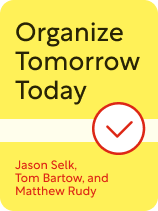

This article is an excerpt from the Shortform book guide to "Organize Tomorrow Today" by Jason Selk, Tom Bartow, and Matthew Rudy. Shortform has the world's best summaries and analyses of books you should be reading.
Like this article? Sign up for a free trial here.
Do you waste time a lot of time on unproductive activities? How can you stop spending time on tasks that don’t yield any productive value?
It’s OK to cut yourself some slack and waste a little time scrolling social media or chatting with coworkers. To keep yourself from getting carried away, dedicate a fixed amount of time to spend on time-wasting activities.
Here’s how to limit the windows of time you spend on unproductive activities.
Scheduled Waste of Time
The authors suggest establishing a maximum amount of time you can use for unproductive activities before you have to start working on your to-do list items. When you start to fill these smaller gaps in your day by completing productive tasks instead of wasting time, you’ll see your overall productivity increase substantially.
For example, say you give yourself a maximum of 10 minutes in between scheduled events to spend on unproductive tasks. If you get out of a meeting five minutes before the next item on your schedule, you can spend that time chatting with coworkers, scrolling on your phone, and so on because it’s under your 10-minute threshold. However, if you get out of a meeting 15 minutes before the next item on your schedule, you have to spend that time working on your to-do list because it’s over the threshold.
| Alternative Techniques for Breaking Up Your Workday Following the authors’ advice for limiting the amount of time you spend on unproductive tasks may improve your efficiency. However, you might worry that eliminating so much downtime in your workday will leave you burnt out, especially if your job demands a lot of mental energy. Here are a few alternative schedules for being more productive at work while still building in time to rest: Work for 75 to 90 minutes, then take a 15-minute break. This breakdown gives you time to focus deeply while you’re working, and the 15-minute break helps your brain consolidate information and remember it better. Work for 25 minutes, then take a five-minute break. After every fourth set of 25 and five minutes, take a longer break (15 to 30 minutes). Known as the Pomodoro Technique, this method breaks down work time into smaller chunks to make getting started feel less intimidating. It also trains your brain to focus: You spend each 25-minute chunk on one task, and your five-minute breaks give your brain a chance to reset. Work for 52 minutes, then take a 17-minute break. One company’s study found that their most productive workers used this schedule. 52 minutes was enough time for them to focus, but it was also a short enough window that they had to work efficiently to get their work done in the time allotted. |
Shorten Tasks and Eliminate the Unnecessary
Finally, you can increase the amount of time you have to spend on important tasks by re-evaluating the items you already have in your schedule. The authors offer the following tips for doing this effectively:
Set a time limit for every activity on your calendar, and stick to it. Always begin on time, and move on from the activity when your time runs out. Your efficiency will naturally improve when you have a clear beginning and end time for each task because you’ll work more quickly to ensure you finish your tasks within the set amount of time. By contrast, if a task has no set end time, you can procrastinate on it indefinitely because there’s no rush.
(Shortform note: Other authors agree that clearly blocking out your time can help you get more work done. In Eat That Frog!, Brian Tracy suggests using a planner to block out time for your most important tasks. When you use a planner, you can build your schedule around getting your work done with minimal interruptions. Act as if each time block is an appointment you have to keep, even if it’s just independent work time.)
Get rid of unnecessary meetings, and shorten the ones you have to keep. If the work you plan to do during a meeting could be completed in a more efficient way (for instance, via a short email thread), cancel the meeting.
(Shortform note: What should you do if you lack the authority to cancel meetings? According to Robert C. Martin in The Clean Coder, if someone requires you to go to an unnecessary meeting, you should dispute this requirement with the appropriate manager. Martin claims that as a professional employee, you have an obligation to avoid these meetings as you’ll waste time and money if you attend.)

———End of Preview———
Like what you just read? Read the rest of the world's best book summary and analysis of Jason Selk, Tom Bartow, and Matthew Rudy's "Organize Tomorrow Today" at Shortform.
Here's what you'll find in our full Organize Tomorrow Today summary:
- How to prioritize and prepare for your tasks every day
- How you can improve your life through positive habits
- Why you need to break free from a perfectionist mindset






